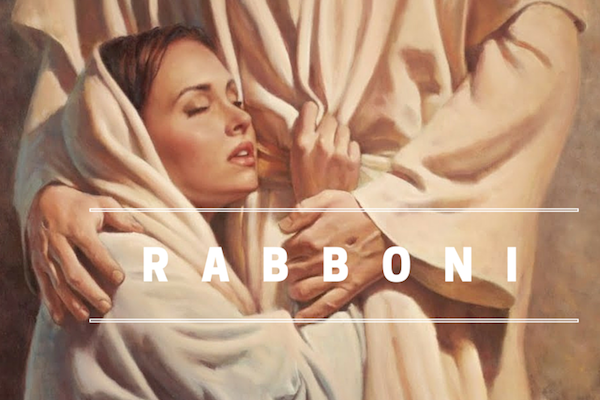RESURRECTION TUESDAY 2024 - LIFE OF CHRIST

RESURRECTION TUESDAY 2024 - Tuesday April 2
“The Lord now began the first of His eleven recorded appearances between His Resurrection and Ascension: Sometimes to His Apostles, at other times to five hundred brethren at once, at some other times to the women.
The first appearance was to Mary Magdalen, who returned to the sepulcher after Peter and John had left it. The idea of the Resurrection did not seem to enter her mind either, though she herself had risen from a tomb sealed by the seven devils of sin. Finding the tomb empty, she broke again into a fountain of tears. With her eyes cast down as the brightness of the early sunrise swept over the dew-covered grass, she vaguely perceived someone near her who asked: “Woman, why art thou weeping?” (John 20:13) She was weeping for what was lost, but His question took away the curse of tears by bidding her to stop her tears. She said: “Because they have carried away my Lord; and I cannot tell where they have taken Him.” (John 20:14)
When she had said this, she turned and saw Jesus standing; and she knew not that it was He. She thought He was the gardener… Believing this man might know where the Lost One could be found, Mary Magdalen went down on her knees and asked: “If it is thou, Sir, that hast carried Him off, tell me where thou hast put Him, and I will take Him away.” (John 20:15)
Jesus said to her: “Mary.” (John 20:15) That voice was more startling than a clap of thunder. She had once heard Jesus say that He called His sheep by name. And now to that One, Who individualized all the sin, sorrow, and tears in the world and marked each soul with a personal, particular, and discriminating love, she turned, seeing the red livid marks on His hands and feet, she uttered but one word: “Rabboni!” (John 20:16), which is the Hebrew of “Master”… After the mental midnight, there was this dazzle; after hours of hopelessness, this hope; after the search, this discovery; after the loss, this find. Magdalen was prepared only to shed reverential tears over the grave; what she was not prepared for was to see Him walking on the wings of the morning.
Mary was always at His feet. She was there as she anointed Him for burial; she was there as she stood at the Cross; now in joy at seeing the Master, she threw herself at His feet to embrace them. But He said to her with a restraining gesture: “Do not cling to Me thus; I have not yet gone up to My Father’s side.” (John 20:17)… Though the Magdalen was humbled by this prohibition of Our Savior, she nevertheless was destined to feel the exaltation of bearing tidings of His Resurrection. The men had grasped the significance of the empty tomb, but not its relation to Redemption and victory over sin and evil. She was to break the precious alabaster box of His Resurrection so that its perfume might fill the world. He said to her: “Return to My brethren and tell them this; I am going up to Him Who is My Father and your Father, Who is My God and your God.” (John 20:17)
He took the Crucifixion to multiply His Sonship into other sons of God. But there would be a vast difference between Himself as the natural Son and human beings, who through His Spirit would become the adopted sons. Hence, as always, he made a rigid distinction between “My Father” and “Your Father”. Never once in His life did He say “Our Father” as if the relationship were the same between Himself and men; His relation to the Father was unique and incommunicable; Sonship was by nature His; only by grace and adoption were men sons of God.
Obediently, Mary Magdalen hastened to the disciples who were “mourning and weeping”. She told them she had seen the Lord and the words He had spoken to her. What reception did her tidings receive? Once again, skepticism, doubt, and unbelief. The Apostles had heard Him speak in figure, symbol, parable, and straightforward speech of the Resurrection which would follow His death, but: “When they were told that He was alive and that she had seen Him, could not believe it.” (Mark 16:11) “To their minds the story seemed madness, and they could not believe it.” (Luke 24:11)
It was a forecast of the way the world would receive the news of Redemption. Mary Magdalen and the other women did not at first believe in the Resurrection; they had to be convinced. Neither did the Apostles believe. Their answer was “You know women! Always imagining things.” Long before the advent of scientific psychology, people were afraid of their minds playing tricks on them. Modern incredulity in the face of the extraordinary is nothing compared to the skepticism which immediately greeted the first news of the Resurrection. What modern skeptics say about the Resurrection story, the disciples themselves were the first to say, namely, it was an idle tale. As the original agnostics of Christianity, with one assent the Apostles dismissed the whole story as a delusion. Something very extraordinary must happen, and some very concrete evidence must be presented to all of these doubters, before they overcome their reluctance to believe.”
(Chapter 54, pgs. 857 – 865)
+ FRASES PARA LEER